Processing
Polystyrene and copolymers are one of the largest groups of polymers produced in the world. The technology of their processing, as a rule, is not difficult. Styrene polymers can be processed by all major methods. Moreover, it is the simplest PSON that can be processed worst of all due to its fragility, brittleness and tendency to cracking at any stresses (including internal ones). This is due to the fact that the linear shrinkage of PS during processing can reach three percent, while the relative deformation before fracture is usually less than this value. Styrene copolymers are processed without any problems.
Polystyrene sheets and boards (including foamed PS or EPS) are produced by extrusion on flat-slot extrusion lines, this also applies to foamed PS. Often, the sheet is not an independent product and is sent for further processing by pneumatic or vacuum forming (thermoforming) into packaging products or disposable dishes. Thermoforming is carried out either on special batch-type machines or on high-performance automatic thermoforming lines.
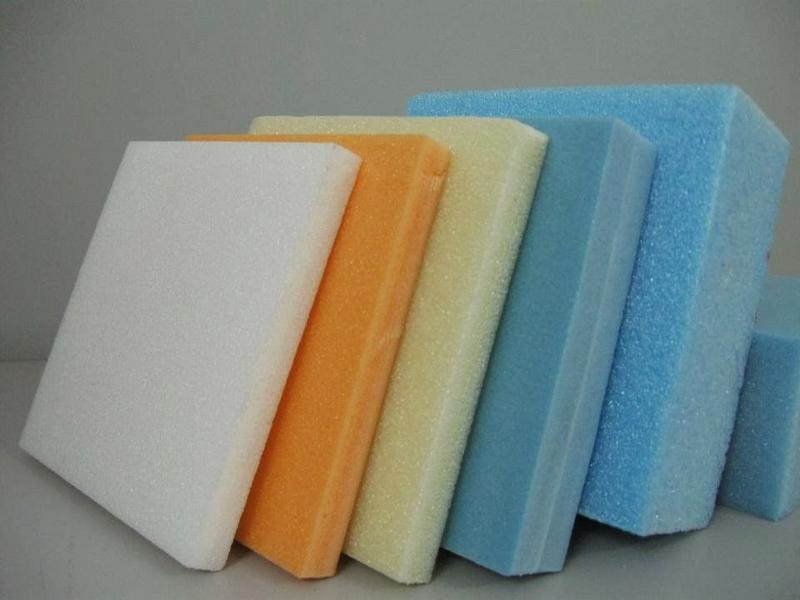
Fig. 2. EPS Foam Types
By injection molding from PS, they produce goods for the home, kitchen (oil cans, bread bins, jars for storing bulk products, etc.), automobile and construction products, etc. There is no need for special equipment for the processing of polystyrene plastics by injection. You can use standard injection molding machines and use any kind of molds, including hot runners, shut-off, multicomponent, etc.
It is important to keep in mind that it is advisable to design molding slopes for PSON more than for other thermoplastics (at least 2 degrees). This is due to the very small relative deformation during fracture described above.
In addition, the casting in the mold cannot be strongly cooled, it is desirable to remove the product as hot as possible.
For coloring PS products in bulk, there are special pigment masterbatches based on polystyrene. Also, with a low percentage input and low requirements for transparency, polystyrene products can be painted with SKP based on polyolefins.
Foaming PS (not to be confused with foamed) is processed on special machines, where foaming takes place using hot steam. Thus, they produce protective foam packaging and building finishing tiles, profiles, panels.
Use of the substance
It should be noted right away that the only difference between regular and transparent polystyrene is that the second option is considered an excellent substitute for plexiglass, since it does an excellent job with its functions. Naturally, thanks to this, the substance received the greatest distribution precisely as a substitute for glass.
It is also important to note here that this substance is a cheaper option, but at the same time its physical and chemical properties are suitable for use not only outside, but also inside.

Transparent polystyrene smooth type is an excellent substitute in cases where it is required to carry out internal glazing of the room. In addition, the raw material perfectly transmits the sun's rays, but at the same time the effect of such direct rays on the material itself causes yellowing, turbidity or even deterioration in strength characteristics.
Forms of issue
Polystyrene is produced in two main forms:
- in the form of finished sheets of various lengths, thicknesses and widths.Transparent polystyrene sheet can acquire different colors during the production process using paints;
- expanded polystyrene sheet. This material is better known to us as Styrofoam. Air bubbles occupy more than 90% of the volume of the foam PS, so this material is very lightweight.
The size of the polystyrene sheet may vary. The most common dimensions: 1500 x 2400, 1000 x 1400, 1000 x 2000, 2000 x 3000 mm.
Most Russian manufacturers guarantee the production of polystyrene sheets of any size at the request of the client.
Specifications
|
Characteristic |
Index |
unit of measurement |
Test Method |
|
|
General |
||||
|
Polycasa HIPS |
Polycasa GPPS |
|||
|
Density |
1,05 |
1.05 |
g / cm3 |
ISO 1183 |
|
Optical |
||||
|
Light transmission |
— |
89 |
% |
DIN 5036 |
|
Refractive index |
— |
1.59 |
ISO 489 |
|
|
Mechanical |
||||
|
Bending modulus |
1850 |
3450 |
MPa |
ISO 178 |
|
Flexural strength |
34 |
85 |
MPa |
ISO 178 |
|
Elongation modulus |
1730 |
3400 |
MPa |
ISO 527 |
|
Tensile strength |
24 |
45 |
MPa |
ISO 527 |
|
Elongation at break |
2,9 |
3 |
% |
ISO 527 |
|
Impact strength |
||||
|
Charpy notched |
9 |
— |
kJ / m2 |
ISO 179 |
|
Charpy without notch |
— |
6 |
kJ / m2 |
ISO 179 |
|
Thermal |
||||
|
Sheet temperature during vacuum forming |
145-150 |
130-170 |
° C |
|
|
Sheet temperature during blow molding |
120-150 |
120-150 |
° C |
|
|
Mold temperature |
60-70 |
— |
° C |
|
|
Post-molding shrinkage |
0,4-0,6 |
0.4-0.6 |
% |
|
|
Pre-drying temperature |
80 |
80 |
° C |
|
|
Hot bending sheet temperature |
125-135 |
105-120 |
° C |
|
|
Vicat softening point |
92 |
101 |
° C |
ISO 306 |
|
Linear expansion coefficient |
8 |
8 |
K-1 X 10-5 |
DIN 53752 |
|
Thermal conductivity |
0,16 |
0.16 |
W / mK |
DIN 52612 |
|
Maximum application temperature |
70 |
80 |
° C |
|
|
Electrical |
||||
|
Dielectric constant (100 Hz) |
2,5 |
2,5 |
DIN 53483 |
|
|
Dielectric strength (100 Hz) |
155 |
20 |
kV / mm |
DIN 53481 |
general information
Physicomechanical and dielectric properties of polystyrene depend on the method of its production, molecular weight, polydispersity, and a number of other factors. With an increase in the content of the low molecular weight fraction, the mechanical strength and softening temperature of the polymer decrease; the presence of high molecular weight fractions makes it difficult to process polystyrene into products. Heating polystyrene, especially above the glass transition temperature (Tg of polystyrene 78-85 ° C), leads to a decrease in almost all of its mechanical characteristics, including breaking tensile stress.
Polystyrene has the following disadvantages:
- tendency to aging,
- low heat resistance,
- maximum operating temperature (70 - 75 о С),
- increased fragility.
This limits its use in products that are exposed to shock loads during operation. When bending, the polystyrene strip bends easily, then breaks sharply with a characteristic crackle. A fine-grained structure is observed at the fracture.
Burns with a bright, highly smoky flame. The smell is sweetish, floral. Density of polystyrene: from 1.05 to 1.08 g / cm. cub. ...
Polystyrene is highly flammable. The oxygen index is 17-19% oxygen, which means that polystyrene maintains stable combustion in air, which contains 21% oxygen. According to the American standard UL-94, polystyrene has a high flammability class UL-94 HB.
processed by injection molding and extrusion at 190-230 ° C. They are used as a structural, electrical insulating (films, threads, etc.) and decorative and finishing material in instrument and mechanical engineering, radio and electrical engineering (for example, housing and instrument panels), for the manufacture of consumer goods (dishes, pens, toys, illuminate fittings, etc.).
To obtain materials with higher heat resistance and impact resistance than polystyrene, use mixtures of the latter with other polymers and styrene copolymers, of which naib. prom. what matters are block and graft copolymers, the so-called impact-resistant materials (see. High impact polystyrene), and also random copolymers of styrene with acrylonitrile (ABS plastic), acrylates and meta-crylates, α-methylstyrene and maleic anhydride. Statistical. copolymers with vinyl monomers are obtained using the same technology as polystyrene, - most often suspension or emulsion copolymerization.
An increase in heat resistance and a decrease in brittleness are achieved when copolymers of styrene with rubbers are obtained (high-impact polystyrene). This process is also called material modification.
Depending on the preparation method, copolymers can have a linear (block copolymers) or branched (graft copolymers) structure of macromolecules.
Fire hazard
Separately, it is worth talking about such quality as fire hazard. Transparent polystyrene 2 mm, 3 mm, etc. differs in that it belongs to the group of combustible materials. It should be added that even in combination with a concrete frame, polystyrene still retains this quality. The reason for this negative effect is that the composition has a high carbon content. Because of this, firefighters usually take an increased interest in structures that are made from these raw materials. However, here it is worth knowing one very important fact. Despite the fact that the substance is flammable, it does not belong to the group of spontaneously flammable. Transparent polystyrene can catch fire only from exposure to open fire.
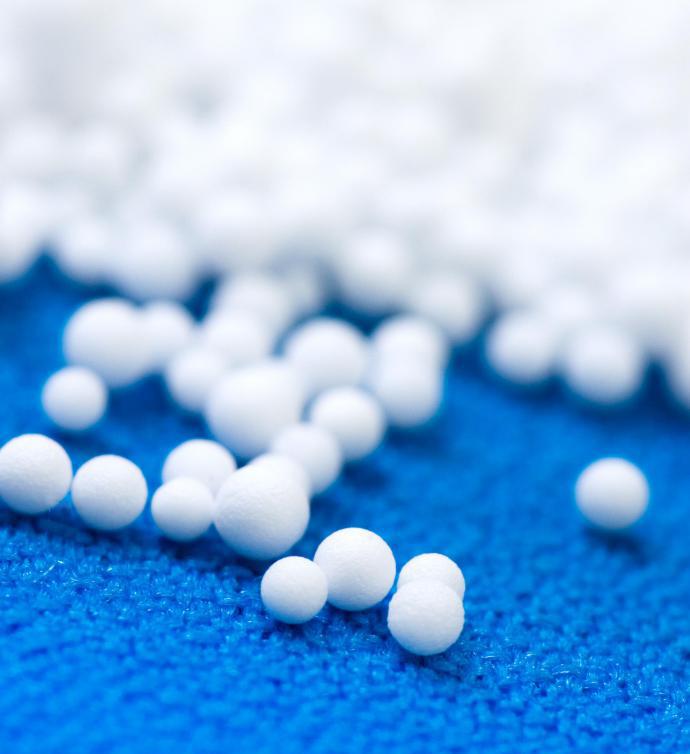
As for the technical and operational characteristics, they are as follows:
- the material is quite lightweight and flexible;
- lends itself well to various processing operations, cutting, etc .;
- lasting;
- good indicators of resistance to acids and alkalis;
- considered impact resistant and very easy to shape.
Application
Due to its many positive performance characteristics and high quality, the material is actively used in the following areas.
- As an interior and exterior decorative finish. Sandwich panels, adhesives, soundproofing and heat-insulating products are made of polystyrene. Exterior facades of houses and other structures are insulated with a foamed type of material.
- In the medical field. The material is used to make instruments, droppers, syringes, Petri dishes and other items of medical equipment.
- High environmental friendliness and harmlessness of polystyrene for health make it possible to make household items from it - dishes, packaging materials, writing utensils, children's toys, various containers for the household. It is also ideal for creating bathtubs and showers.
- Bases for screen printing are made of polymer.
- Polystyrene scatters light well, therefore, for agriculture, frames for greenhouses and greenhouses are produced, in which glass is replaced with transparent plastic.
- The polymer is used for industrial and military purposes - it is used to construct technical buildings, turbines, equipment, explosives.
- Plastic containers for the food industry are also made of polystyrene, for example, packaging trays designed for packing dairy or meat products.
- In electrical engineering, the material is used as films for condensation in wires and cables, as well as for the production of housings for household appliances - washing machines, refrigerators, and so on.
- In addition, plastic has found application in the field of advertising - signs, signs, plates on the doors of shops, hotels, cafes, government institutions are made from it.
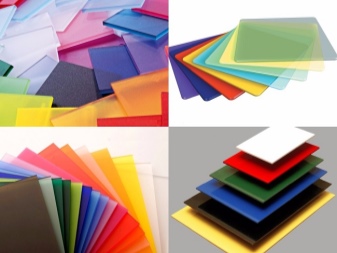
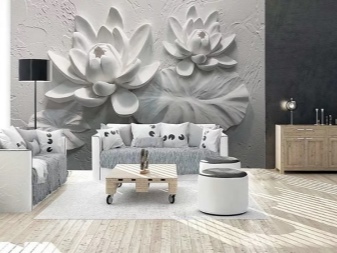
Check out the next video for more information on the pros and cons of polystyrene sheet.
Features and purpose
Polystyrene is a sheet material obtained by polymerizing vinyl benzene (styrene), which is the main carbon from which most polymers are created. Polystyrene sheet has a linear structure, it is easy to process, but its main feature is its high thermoplasticity. This allows us to manufacture products with various shapes, all types and brands. The technology of plastic production is quite simple, and in terms of its properties it is a durable and practical material, characterized by increased shock-resistant characteristics. It successfully replaces glass due to its transparency.
The color palette of the product is multifaceted, which makes it possible to use it in interior design. In addition, different types of plastics are used to obtain household items, medicine, and construction.It is used in the military and food industries. Many things around us are made of polystyrene, including all kinds of technical devices, without which it is difficult to imagine modern life.
Scope of application
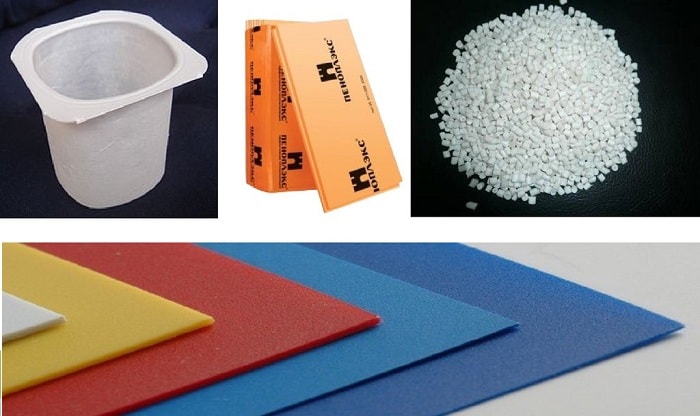
Household sphere. The polymer is odorless and can come into contact with food without harm to human health. It is due to its high environmental friendliness and safety that it is used for the manufacture of a large number of household items: disposable dishes, packaging and containers, children's toys, interior items, stationery.
Construction. The material is widely used in construction for thermal insulation, in the production of sandwich panels, as a decorative and finishing material. Ceiling tiles, sound-absorbing elements, an adhesive base and much more are made from it. In addition, it is often used in road construction, construction of industrial buildings and structures.
Medicine. Plastic is used in the manufacture of various medical equipment and instruments. In particular, in the production of blood transfusion systems, disposable instruments, consumables, Petri dishes.
Electrical and consumer electronics. The good dielectric properties of polystyrene have found application in the production of antennas, cables, thin oriented capacitor films. It is also used in the manufacture of housings for household appliances, refrigeration units.
Industry. In the civilian industry, it is used for the construction of various structures, units, turbines, buildings and structures. It is also used in the military industry to produce napalm and some explosives.
Polystyrene is a high-tech and inexpensive material with excellent thermal and sound insulation properties. Environmental safety and availability determine its widespread use in various spheres of human life. At the moment, the polymer has no analogues that could replace it. Materials close to polystyrene either have worse performance properties or are more expensive. Apparently, it will remain in demand both in the Russian and world markets for many years to come.
Methods of obtaining
There are several methods for the production of polystyrene. Some of them are widespread and are used to this day, others are used only in rare cases. There are three main ways to create it: emulsion, suspension, block or bulk.
For a number of reasons, the emulsion method has not received such distribution as the other two. It is based on the polymerization of styrene in an alkaline solution at 85 - 95 degrees Celsius. To obtain the finished product, styrene, water, an emulsifier and a polymerization initiator are used. This method makes it possible to obtain a polymer with a high molecular weight.
The suspension method is already outdated today, but it is still used in the production of expanded polystyrene, it is also used to obtain copolymers. Polymerization of styrene occurs with a gradual increase in temperature under pressure. During the production process, a suspension is obtained, from which the finished product is already obtained by centrifugation. Then it is washed and dried.
The block or bulk method is the most modern and is used in most chemical plants. Its advantages are obtaining high quality products at the output, wastelessness, high efficiency. Industrial enterprises use two schemes: full and incomplete conversion. The process takes place in several stages with a gradual increase in temperature.
Types and characteristics
According to its characteristics and manufacturing method, the polymer can be of different types.
- Polystyrene sheet GPPS (general purpose).
- Medium impact VIPS material.
- Foamed plastic sheet, marked with EPS and EPS.
- Products released by means of an extruder (EPS, XPS).
- High Impact Resistant Polystyrene (HIPS).
The most popular is a transparent general-purpose material, which has a high level of resistance to deformation and a good margin of safety, which is due to the content of rubber in its composition.
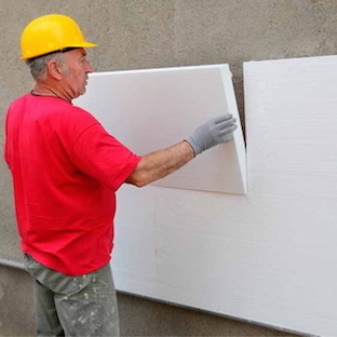
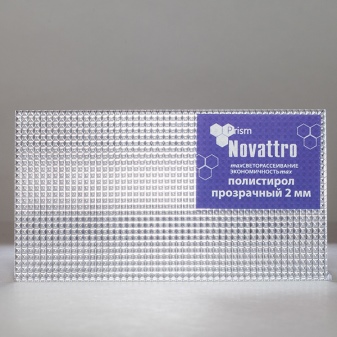
Its technical properties:
- colorlessness;
- low moisture absorption;
- high dielectric constant;
- radiation resistance;
- hardness and toughness;
- fragility;
- exposure to ultraviolet radiation.
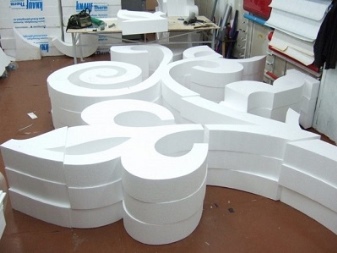
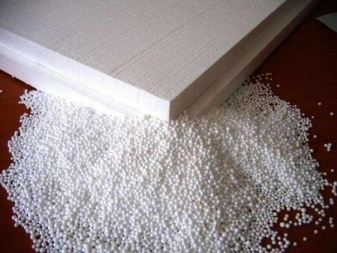
High impact plastic is more durable, but has almost the same hardness and thermal conductivity. Products obtained by extrusion polymerization are considered the best material for thermal insulation, and its performance is unique.
- Polymer sheets have good moisture resistance.
- They calmly endure subzero temperatures.
- They have increased durability.
- They are environmentally friendly in their composition.
- Not affected by aggressive media.
- They have low thermal conductivity and long service life.
- Do not rot, rust or mold.
Plastic sheets of this type lend themselves to various processing methods - polishing and varnishing, milling, sawing, forming using vacuum and thermal action, color printing, metallization and drilling. The only treatment that cannot be applied to the material is electric welding, since plastic has high electrical insulation characteristics.
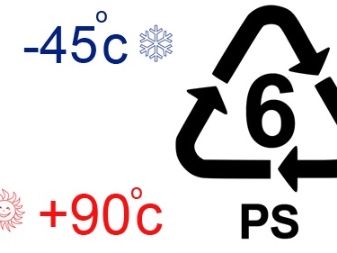
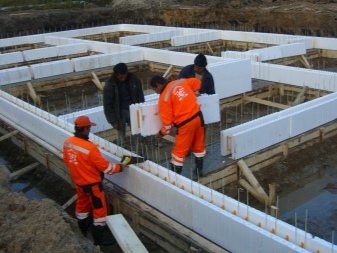
But extruded polystyrene has a significant drawback - a low level of resistance to fire. However, the product does not burn out, since the material is self-extinguishing. Transparent or white polymer plastic is used for various purposes. But it can also be colored, which is achieved by adding the necessary pigments during manufacture or by applying a dye to already finished surfaces. The following types of products are often used in construction:
- glossy polystyrene;
- plastic with a mirror surface;
- matte products.
The dimensions of the sheet material are different: the length ranges from 1000 to 3500 mm, the width is 1000-2000 mm. The thickness of the products varies from 1 to 3 mm. It should be added that sheet polymer is easy to process, it has an affordable price, and this also affects the competitiveness of the material.
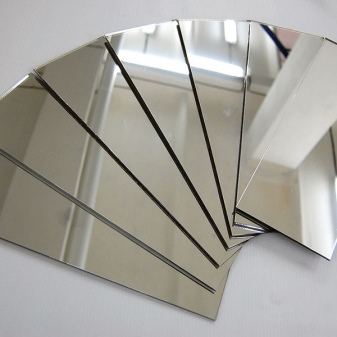

Light scattering and extruded polystyrene
Conventional light-scattering polystyrene is quite similar to acrylic glass. Raw materials are considered to be very fragile and have a low density. But at the same time, the range of its use is quite wide.

Among the advantages of the material, high resistance to moisture stands out, which is why its service life is quite long. The surface is completely smooth and highly transparent, which makes it successfully used as a cheap substitute for plexiglass. Of the obvious shortcomings, not only fragility stands out, but also low resistance to ultraviolet rays and their effects.
In order to obtain extruded or, as it is also called, foamed polystyrene, it is necessary to heat the raw material with the addition of a foaming agent and subsequent extrusion in the form of sheet or roll material. Expanded polystyrene is most widely used in the construction industry. It has been used as a versatile insulation for about 60 years. Of the obvious advantages, one can single out reliability, high resistance to chemicals, moisture and mold. In addition, among all other types of polystyrene, this one is considered the most environmentally friendly. Of the minuses, only one stands out - flammability, as for other types.

People who have used any type of polystyrene are satisfied.The largest number of positive reviews came from those who installed this material as doors for shower stalls. Some complained that in extremely hot weather, when exposed to sunlight, polystyrene began to smell unpleasant and turn yellow.
Polystyrene sheet processing
Polystyrene sheet is easy to process. High thermoplasticity makes it possible to manufacture various products from this material: from the thinnest containers for food products to thick sheets for outdoor advertising in cities. High-impact polystyrene sheet is more convenient for processing.
- sawing - done with a circular or hand saw. For very thin sheets, a jigsaw is allowed;
- drilling - drills for plastic or metal are used. Produced with a drill for plastic. A wooden block is placed under the bottom of the sheet to prevent the appearance of chips;
- edge processing - the edges of the sheets are subject to processing with a file and even a plane;
- forming - the volumetric shape of products from sheet PS is given by a vacuum method or by air pressure. The temperature during heat treatment must be maintained in the range of 160-200 ° C;
- welding - ultrasonic and gas types of welding are used. Electric welding is impossible due to the high electrical insulating properties of the material;
- gluing - made using synthetic adhesives based on neoprene and cyanoacrylate. The surfaces to be glued are degreased before starting work;
- printing - application of printed images is possible without additional surface treatment of the sheet. Printing methods: offset, stencil and silk-screen printing;
- varnishing - it is allowed to process the surface of the sheets with natural and synthetic varnishes;
- polishing - the matte surface is polished with a polishing wheel using a special paste. It is not recommended to use hard abrasives;
- milling - takes place on universal milling machines. When fixing the sheets on the bed, wood gaskets are used;
- metallization - for producing metallization by spraying in a high vacuum.
The softening point of polystyrene is 95 ° C. Therefore, it is recommended to use coolant for all types of machining (sawing, drilling, milling).
Description of high impact polystyrene
Transparent impact-resistant polystyrene is a sheet material that is characterized by resistance to cold, complete indifference to the effects of alkalis, as well as thinness. Due to all these qualities, it is often used in the food industry. However, one way or another, this type of raw material is used in almost all spheres of human activity due to the versatility of its properties. Depending on the processing method, it can be divided into several types:
- glossy and matte;
- smooth and embossed;
- transparent polystyrene light diffuser or, conversely, colored material.

Among the main advantages, the following points stand out:
- high strength and water resistance;
- has the properties of dielectrics;
- if it is in solid form, then it does not emit substances hazardous to humans;
- light machining;
- high resistance to frost;
- the material melts quite easily.
Among the disadvantages of a sheet impact-resistant substance is its flammability, as well as solubility in most compositions based on aromatic hydrocarbons.
